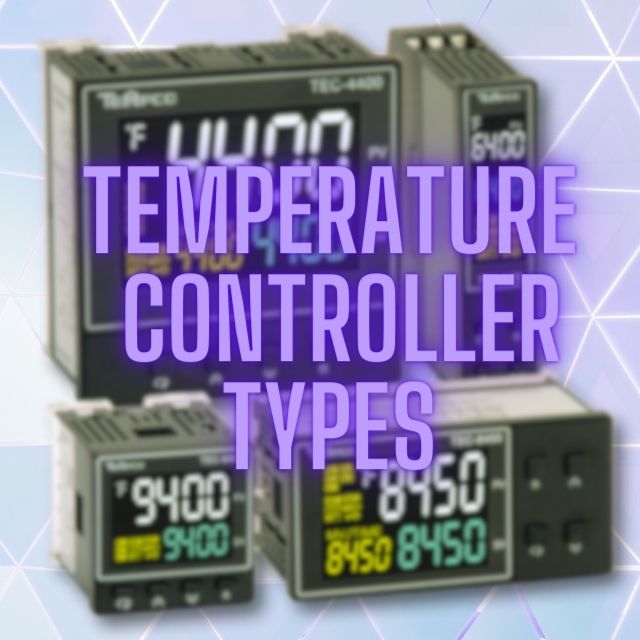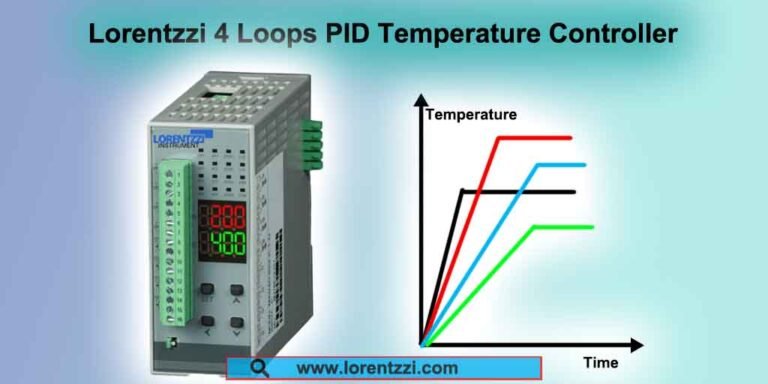Are you wondering about the various types of temperature controllers available in the market?
You’ve come to the right place.
This article aims to equip you with a wealth of comprehensive knowledge on the subject.
Therefore, in this article, we will list all temperature controller types based on function, installation, and application according to our extensive experience.
Now, let’s get started!
From a functional perspective:
From a functional perspective, temperature controllers can be categorized into on/off, PID, and ramp-and-soak types.
In the following sections, we will delve into each of them one by one.
On/off Temperature Controller
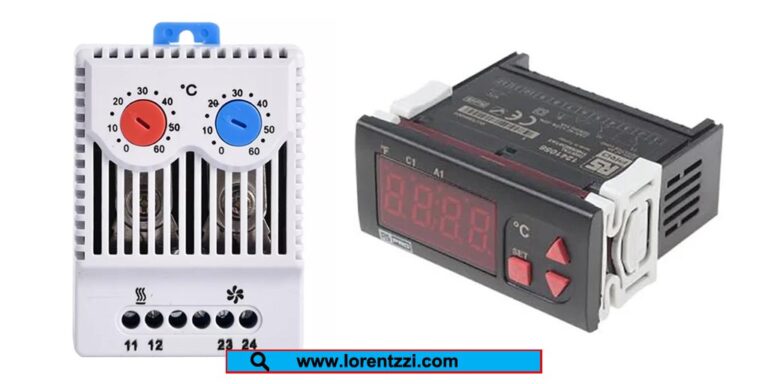
As shown in the image above, an on/off temperature controller is one of the simplest yet economical options for temperature regulation.
When the detected temperature deviates from the preset value – either falling below or rising above it – the device responds by turning the output on or off accordingly.
However, this on/off control mechanism results in a continuous fluctuation of the temperature curve around the set point, making it unable to maintain a completely stable temperature.
The following figure shows the temperature fluctuation curve of the on/off control temperature controller:

Such controllers are predominantly applied in scenarios where high precision is not essential, like bread makers, electric baking ovens, refrigerators, freezers, and the like.
Pid temperature controller
The PID temperature controller stands out as one of the most precise process instruments designed to maintain a stable temperature.
It goes beyond simple proportional control and integrates proportional, integral and differential algorithms.

Parameter “P” is used to control the size of temperature fluctuations, parameter “I” is the integral term, which is used to calculate and control the size of the error, and parameter “D” is a judgment of the future, which is used to calculate and control the rate of temperature rise and fall.
By the way, Lorentzzi brand PID temperature controllers have advanced auto-tuning capabilities. This means there’s no need for manual adjustment of the PID parameters, as the controller will automatically find the optimal P.I.D parameters.
Ramp and soak temperature controller

Ramp and soak temperature controllers, also known as programmable or profiling temperature controllers, are mainly used to control the temperature curve of kilns, ovens or other heating equipment according to set values.
Ramp and soak temperature controllers typically allow you to set both the heat time and the soak time, as shown in the image above, so multiple temperature points and durations can be set.
You can read our article “Ramp And Soak Temperature Controller: What Is It And How It Works” for more information.
From an installation perspective:
From the installation method, the temperature controllers can be divided into two types: panel mounted and rail mounted types.
As described above, we will also explain them one by one.
Panel-mount temperature controller
Panel-mount temperature controllers are the most common type of process controllers.
They are mounted outside the distribution box using brackets.
To install, pre-drill holes, insert the controller body, and secure it firmly with the bracket.
DIN rail temperature controller
The DIN rail temperature controller is a process control instrument, which is designed to mount on a standard 35 mm DIN rail via its mounting structure.
This makes it highly versatile for use in temperature control systems alongside various devices such as PLCs, miniature circuit breakers, and relays.
In addition to its ease of use, the DIN rail temperature controller offers easy installation, space-saving design, and seamless integration with other components.
Lorentzzi offers a DIN rail temperature controller with a thickness of only 27 mm. These controllers are equipped with RS485 communication and support up to 15 parallel connections.
From application perspective:
If temperature controllers are classified by application, they can be divided into two categories: enclosure thermostat and household thermostat.
Both products are simple on/off types.
Enclosure thermostat
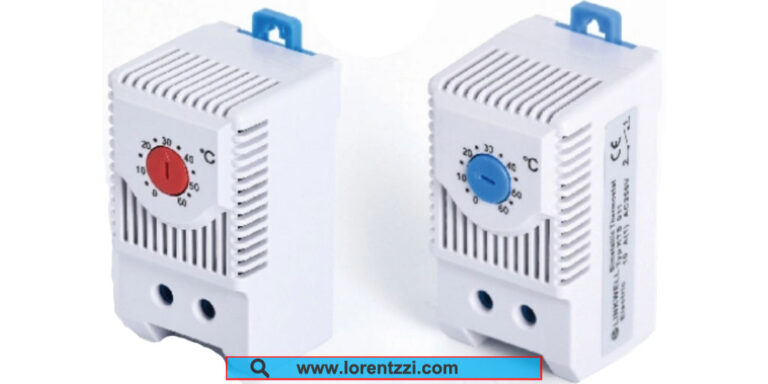
The enclosure thermostat, also known as a distribution box temperature controller, plays a crucial role in maintaining the optimal operating temperature for electronic products.
Most distribution boxes are equipped with this device to protect internal components from temperature fluctuations.
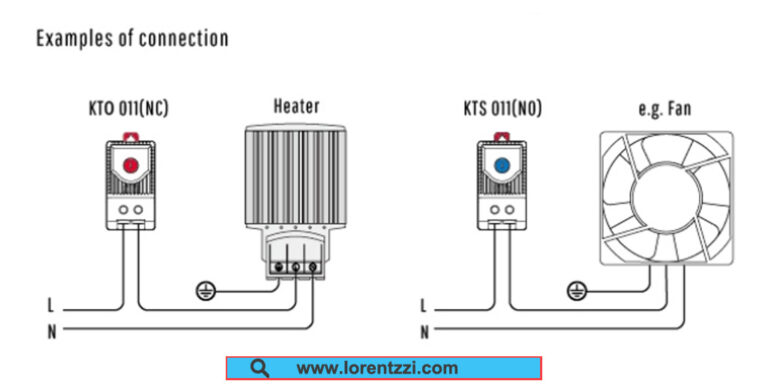
For instance, the KTO 011 and KTS 011 thermostats shown in the above image are specifically designed for use in distribution boxes.
These two thermostats operate by monitoring the temperature difference between the set value and the actual measured temperature.
When a deviation is detected, it automatically activates the heater to increase the temperature or the cooling fan to decrease it, ensuring the environment remains within the desired temperature range.
Household themostat
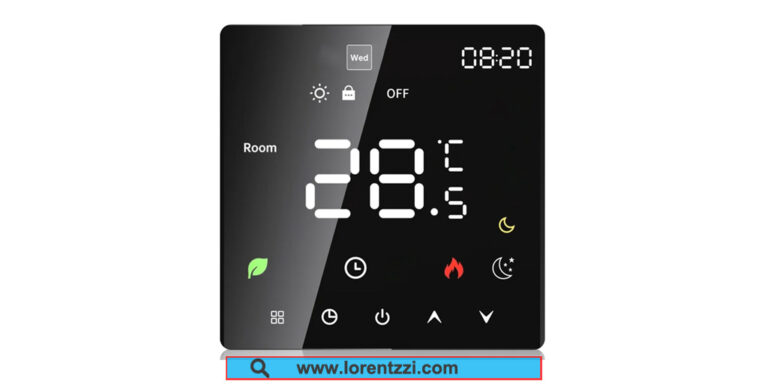
The home temperature controller, or home thermostat, is a widely used device commonly found in hotels, residential living rooms, and other similar settings. It plays a crucial role in maintaining indoor temperatures at levels that ensure human comfort.
The working principle of a home thermostat involves monitoring the indoor temperature and comparing it to a user-defined set point.
When the indoor temperature drops below the set temperature, the thermostat triggers the heating system—such as a boiler or heater—to activate and raise the indoor temperature.
Conversely, when the indoor temperature rises above the set temperature, the thermostat signals the air conditioning system or cooling equipment to start operating and lower the indoor temperature.
This continuous regulation helps maintain a comfortable indoor environment.
The working principle of a home thermostat is that if the indoor temperature is lower than the set temperature, the thermostat will send a signal to the heating system (such as boiler, heater, etc.) to start working and increase the indoor temperature. On the contrary, if the indoor temperature is higher than the set temperature, the thermostat will send a signal to the air conditioning system or cooling equipment to start working and reduce the indoor temperature.
Conclusion
Temperature controllers can be divided into several types from different perspectives, but all in all, they provide effective solutions for temperature control challenges.
Lorentzzi®, as a Chinese temperature controller manufacturer, offers various temperature controllers with excellent product quality and competitive prices.
We are a leading force in temperature controller manufacturing and supplying, we always prioritize innovation and user needs.
If you want to purchase different types of temperature controllers from China, please contact us to get a quote now!

